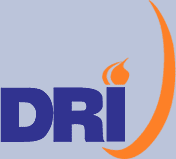 |
Disability |
|
|
• Home(1)
|
Medical Evidence Profiles ProjectPrincipal Investigators: Tanya Gallagher, Tom Prudhomme and Michael Welge Project Type: Core Research Project Year: 05 Thematic Category: Disability Determination Process Project Summary: To aid the disability determination process, SSA has compiled reference sources regarding the characteristics and medical evidence requirements to meet medical information needs at Step 3 of the five-step process, Disability Evaluation Under Social Security (Blue Book), and the Program Operations Manual System (POMS). Information in these reference sources and in the SSA Rulings is used to determine whether or not an applicant meets or equals the Medical Listings by having a “medically-determinable physical or mental impairment, which can be expected to result in death or has lasted or can be expected to last for a continuous period of not less than 12 months.” It would be useful to analyze information in these reference sources across medical impairment categories to determine common elements with medical evidence implications. Easy identification of common elements such as conditions that require time-series medical evidence, those that have durational characteristics, etc. would help the agency as it considers implementing the disability determination process improvements proposed by Commissioner Barnhart. The proposed project will analyze and index information from the Blue Book, the POMS, and SSA Rulings through text analysis and a user-friendly, electronic data access architecture to facilitate queries across medical impairments. The electronic reference source that would be created as a result of this project would facilitate the disability determination process and thereby help to address field office personnel training needs. It also would be a resource for agency process illumination, facilitating identification of issues warranting further policy or procedural consideration. |
|
|
|
|
|